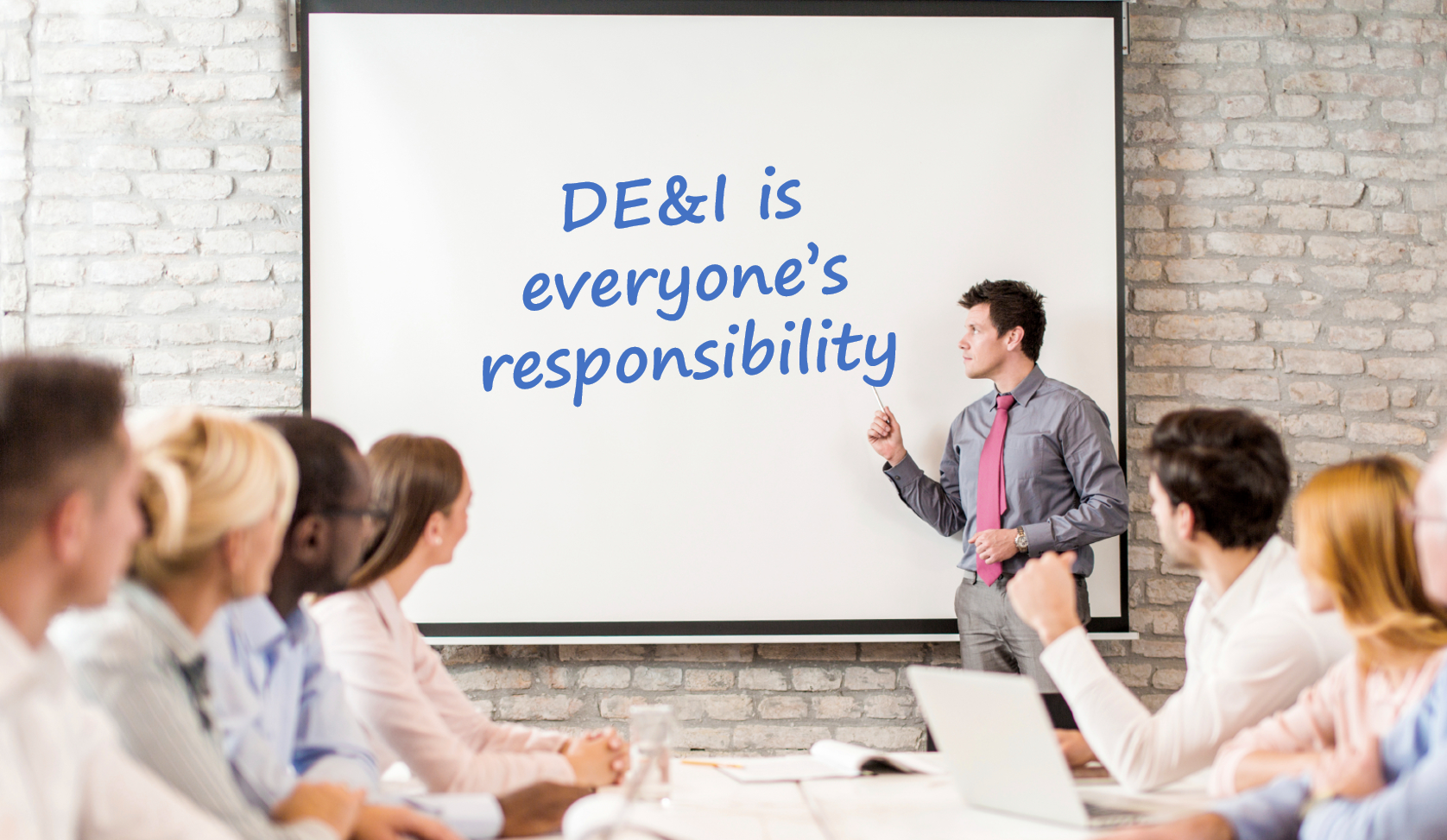
- Dale Ludwig Presentations, Turpin's Culture
For too long, companies such as ours let it be other people’s business to create a more diverse, equitable, and inclusive world. What authority did we, a small boutique training and consulting firm, have when it comes to another organization’s DEI? In recent months, we’ve reconsidered. We have decided we do, in fact, have a responsibility to support our clients’ DEI efforts. We feel it is important to speak out on issues of race, class, gender, sexual orientation, and disability, especially within our sphere of influence: communication training.
We are committed to continuous learning, active listening, admitting when we get it wrong, and course-correcting openly. We commit to helping others understand their responsibilities to create the conditions for fruitful conversations for all. We’ll do this in our workshops, public speaking events, and private coaching sessions. Every client interaction we have and blog we publish represents what we understand to be the best practice at the time.
Being inclusive takes many forms. In this article, we’ll discuss meeting your audience where they are. In Part II, we’ll take it a step further and discuss how to support DEI initiatives when leading meetings.
If the audience for your business presentations is usually the same group of people—your internal team or a well-known group of clients—your assessment of them can become pretty instinctive and even subconscious. You share a common working language, and you know what challenges they face, what their business or learning goals are, and what approaches to information they will find effective or persuasive. But some jobs, especially higher up the org chart, can involve a fair amount of presenting to completely unknown audiences, including the general public and potential clients, investors, or partners. When you do your assessment of an audience you haven’t met, additional considerations come into play in order to ensure an effective presentation.
Analyses that can help you present effectively to an unknown audience
First of all, ask yourself why they’re coming to hear you. Broader audiences usually have a choice about whether to attend a presentation (unlike team members or clients, whose work depends on your content), so ask yourself what value you’re delivering for an interested party. Sometimes you know a little bit about who’s likely to attend based on the organization sponsoring you. An investment club, job fair, or small-business speed-dating event comes with pretty clear expectations of what attendees are there for. Shaping your presentation around the content needs and expectations of those general audiences is pretty straightforward most of the time.
But an unknown audience brings with it additional considerations that you may not be thinking about with your old familiar crew. Practically speaking, you may have to do a lot more explaining than you’re used to, especially when it comes to terminology, acronyms, and data.
- Analyze your terminology in the context of your audience. For example, let’s say you are the founder and CEO of a company that makes adhesives, and you are presenting to a group of chemical engineers at a conference. Here’s how to think about them and adjust your presentation content accordingly:
- They do know basic and advanced general chemistry terminology.
- They may or may not know terminology specific to adhesives.
- They will not know the terminology specific to your company or clients.
- Acronyms are different not only from industry to industry but even among companies. Spell out your acronyms the first time you use them, both verbally and on a slide. This gives your audience two opportunities to learn what that acronym means. It’s a good idea to use the full term a few times before resorting exclusively to the acronym. For example, if you’re presenting to a group of technical writers, you might say, “When you use the style guide of the Institute of Electrical and Electronics Engineers, or IEEE . . .” a few times before you refer solely to IEEE.
- Finally, remember that your listeners may not understand the context in which your business operates. For example, if you say, “We have a 34% success rate in lowering clients’ supply costs,” your audience may not know whether to be disappointed or impressed. Simply adding context like, “. . . and the industry average is 19.5% according to federal regulators” will ensure that your audience understands how your company compares and why that statistic is significant.
From a practical standpoint, to present effectively to an unknown audience, you have to consider why they’re interested in hearing from you, what they probably already know, and what you’ll need to teach them in order for them to get the most out of your business presentation. In Part II of this conversation, we’ll talk about another issue you’ll face when presenting to unknown audiences: how to ensure your content is respectful and inclusive.

